Bagheera Collection

The Children’s Literature Research Centre promotes and collaborates to the realisation of a specific collection of studies entitled “Bagheera” (ETS, Pisa).
The Bagheera collection refers to the authoritative and adventurous mentor of little Mowgli to underline the delicate and special role that Children’s Literature plays for readers, authors, and scholars.
The collection aims indeed to give voice to research contributions that investigate the complexity of Children’s Literature, enhancing the vocation to multiplicity and interdisciplinarity of theoretical approaches belonging to this compound field. Basically interlaced to the cultural history of childhood, of its representation and of its relationship to adulthood, Children’s and Youth Literature is in a border and confluence area that has always been tied to the circularity of imagery and, therefore, to the creation of metaphors, representations, topics and narrations that take root and intersect in the production of books for children and ramify into cinema, theatre, art, media. Children are given the testimonial visions of the human matters, with stories, figures and tales that represent its heritage in the making. Exploring its value and the plurality of its meanings requires study, deepening, deciphering programmes that compare interpretative keys and offer research opportunities for innovation and growth. Supporting this process is the aim of the collection.
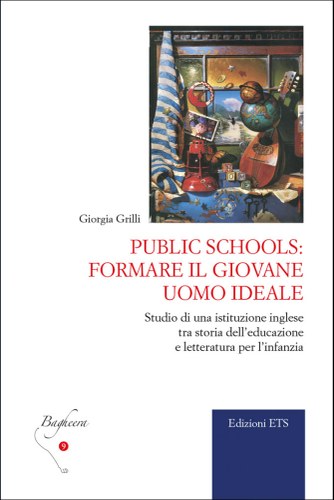
Public Schools: formare il giovane uomo ideale.
Storia di una istituzione inglese tra storia dell'educazione e letteratura per l'infanzia
Public Schools: To Form the Ideal Young Man.
History of an English Institution between History of Education and Children’s Literature
Author: Giorgia Grilli
Publication year: 2017
There are schools, in the collective imagery, that are ‘more properly schools’ than others, and British public schools can be considered as such, even for those who don’t belong to the Anglo-Saxon world and have never attended nor directly known them. This is also due to the remarkable literary and film production that has been developed on them, a production which goes up to the series of Harry Potter, though in an updated way and with an innovative fantastic feature. In this volume the author tries to trace the history of these powerful educational institutions that are particular for being – with all the adjustments, internal revolutions, curriculum reforms and philosophical reforms that have occurred over time – irreducible worlds apart, isolated, insulating, with its own codes, putting youngs on hold against the ‘real’ world to make them paradoxically ready and perfect for ruling it. By comparing official documents with the literary strand of school stories, i.e. weaving the history of education with the history of children’s literature, this study analyses the evolution of the educational ideals of public schools in relation to the changes in the historical and social context and in the imagery in Great Britain at the time of the rise of its Empire. At the same time, it identifies their sustained and unchanging basic aim: the education of young men meant for leadership and capable of an ideal behaviour, so as to become a model also and above all for those youngs belonging to lower social classes who couldn’t attend these prestigious schools, but tried to be like the literary hero students by all means.
Giorgia Grilli teaches Children’s Literature at the University of Bologna. She is co-founder of the Children’s Literature Research Centre (CRLI) of the Department of Education Studies. She wrote and/or edited several volumes and critical essays on Children’s Literature, some of which were translated and published in English (Myth, Symbol and Meaning in Mary Poppins, Routledge, 2014; Bologna: Fifty Years of Books for Children From Around the World, BUP, 2013; with Fabian Negrin, Ugo Fontana. Illustrating for Children, ETS, 2014; with Marcella Terrusi, A (Visual) Journey to Italy, in Evelyn Arizpe, Teresa Colomer, Carmen Martinez Roldan (eds), Visual Journeys Through Wordless Narratives. An International Inquiry with Immigrant Children and ‘The Arrival’, Bloomsbury Academic, 2014). Other publications include: with Emy Beseghi, La letteratura invisibile. Infanzia e libri per bambini (Carocci, 2011); Libri nella giungla. Orientarsi nell’editoria per ragazzi (Carocci, 2012); Di cosa parlano i libri per bambini. La letteratura per l’infanzia come critica radicale (Donzelli, 2021). She organized and participated in several international seminars and conferences on Children’s Literature, particularly in the USA, where in 2015 she was awarded the title of “Distinguished Scholar” by the Children’s Literature Association.

Making the Italians: Poetics and Politics of Italian Children's Fantasy
Author: Lindsay Myers
Publication year: 2017
Italian children’s literature has a diverse and unusual tradition of fantasy. With the exception of Carlo Collodi’s Pinocchio, however, it has remained almost entirely unknown outside of Italy. Why is it that Italian children’s fantasy has remained such a well-kept secret? How ‘international’ is the term ‘fantasy’, and to what extent has its development been influenced by local as well as global factors? Cross-cultural and cross-linguistic research into this neglected area is essential if we are to enrich our understanding of this important literary genre.
This book charts the history and evolution of Italian children’s fantasy, from its first appearance in the 1870s to the present day. It traces the structural and thematic progression of the genre in Italy and situates this development against the changing backdrop of Italian culture, society and politics. The author argues that ever since the foundation of Italy as a nation-state the Italian people have been actively involved in an ongoing process of identity formation and that the development of children’s fantasy texts has been inextricably intertwined with socio-political and cultural imperatives.
Lindsay Myers is a college lecturer in Italian and Children's Studies at NUI Galway. Her research focuses on Italian children's literature and culture, comparative children's and youth literature and film, aesthetic education and innovative pedagogical approaches. She introduced the BA Connect with Children's Studies to the University of Galway in 2008 and was a co-program designer of the BA Children's Studies which came on stream in 2015. She is also founder member of the Irish Society for the Study of Children’s Literature, as well as active member of several international associations of children’s literature, among which the International Research Society for the Study of Children’s Literature, Children’s Literature in Italy and the Children’s Literature Association.
On the front cover: illustration by Dermot Canniffe.
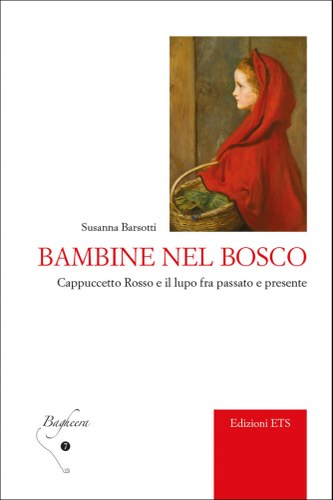
Bambine nel bosco
Cappuccetto Rosso e il lupo fra passato e presente
Girls in the Wood
Little Red Riding Hood and the Wolf between Past and Present
Author: Susanna Barsotti
Publication year: 2016
From time immemorial the wood of narrations is a metaphor of the unknown, of mystery, fear and fascination. The characters that people stories make paths along it, getting lost in the plant tangle, experiencing being devoured, being swallowed by wild paths, because only then they can finally come back. The wood is the privileged passage to the other world, it establishes a boundary, an outside, an alterity as compared with the inhabited world, opposing the reassuring inside of houses. On the edge of this wood a little girl is ready to embark on her journey; by following her steps, this book aims at reconstructing the – also historical – pathway that the character with a well-known red hood walked migrating from one country to another, from one era to another, from a narrative form to another. In the story of Little Red Riding Hood we are faced with the fear of the wood and therefore of the wolf, with the fear of rites of passage and therefore of death; we are faced with getting lost in an elsewhere, which means getting lost in oneself, in the ‘other’, a step necessary to acquire their own identity; there is transgression, disobedience to the rules, first step on the path to growth, to gain autonomy – and Little Red Riding Hood is a rebellious, strong-willed child, who, in the popular versions, is shrewd, she tricks the wolf and saves herself from him. The fascination which the icon of Little Red Riding Hood exerts since time immemorial probably consists of this. The “fear of the fear” which this little girl embodies. The central core of her story lies right in Little Red Riding Hood getting alone into the wood to meet the wolf and win against him. This is the topic that, often with a woman’s voice, passes through artistic, film, and media contemporary representations, and leads the main character to face wolves that are much more similar to human nature and therefore creepier and more dangerous. Today’s Little Red Riding Hoods have to go through concrete woods, getting lost in “non-places” as fascinating and at the same time insidious, dark, unknown as it is the wood of ancient times.
Susanna Barsotti is Associate Professor of Children’s Literature at the University of Roma Tre. In her personal research itinerary, she mainly worked on narration and its pedagogical and educational values and on the relationship between written code and iconic code within picturebooks. She is author of several essays and volumes. Amongst her latest publications we mention: the volume Ancora Pinocchio. Riflessioni sulle avventure di un burattino, (with A. Avanzini, Franco Angeli, Milano 2012); the essay Bambine, bambini e regole infrante. Precetti e insegnamenti morali nella letteratura per ragazzi tra Otto e Novecento (in the volume L’educazione sentimentale. Vita e norme nelle pedagogie narrate edited by F. Borruso, L. Cantatore, C. Covato, Guerini, Milano 2014) and the article The fairy tale: recent interpretations, female characters and contemporary rewriting. Considerations about an “irresistible” genre (in the review «Ricerche di Pedagogia e Didattica», n. 10, 2015).
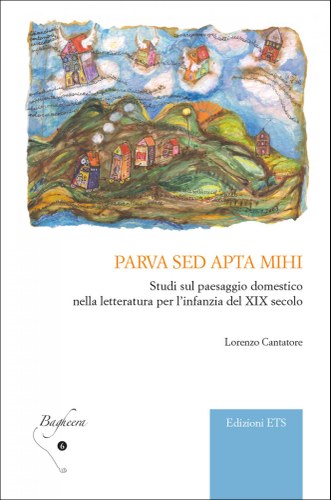
Parva sed apta mihi
Studi sul paesaggio domestico nella letteratura per l’infanzia del XIX secolo
Parva sed apta mihi
Studies on the Domestic Landscape in XIXth Century Children’s Literature
Author: Lorenzo Cantatore
Publication year: 2015
‘Parva sed adapta mihi’ is a Latin verse which means “little but suitable for me”. It was once engraved on the front of many houses to express the pride of who, with great sacrifices, managed to build the home of their lives. By chasing the intense and ambiguous meanings that the concept of domesticity has taken in the history of the western bourgeois culture, this book knocks the doors of many of the houses where children’s authors of the nineteenth century made their young characters live. Oliver Twist, David Copperfield, Rémi, Tom Sawyer, Hukleberry Finn, the Little Women, Humphrey the Misunderstood, Salgari’s heroins are just some of the literary characters whose houses are explored by Lorenzo Cantatore as if they were as many metaphors for life.
Even today, the relationship between child and home is a very topical issue in educational research, and it is the first concrete manifestation of care, but also of the models imposed by adults. Narrating stories set in domestic landscapes to children is and was a main theme of countless fairy tales, tales, novels and picturebooks, where the poetry of the places reveals a deeply pedagogical soul that makes the most complex and contradictory cords of the relationships between childhood, family and society vibrate.
Lorenzo Cantatore is Full Professor of Children’s Literature at the University of Roma Tre. He is a scholar of history of education, literature and art between 19th and 20th century, and author and editor of several essays and volumes. Amongst his latest publications we mention the editorship of: Il primo amore: l’educazione sentimentale nelle pedagogie narrate (with F. Borruso, Guerini, Milano 2012); Ottocento fra casa e scuola: luoghi, oggetti, scene della letteratura per l’infanzia (Unicopli, Milano 2013); L’educazione sentimentale: vita e norme nelle pedagogie narrate (with F. Borruso and C. Covato, Guerini, Milano 2014).
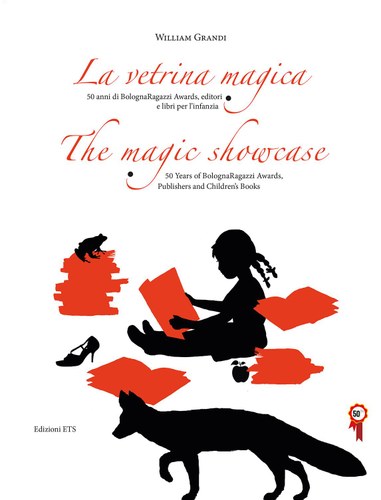
La vetrina magica - The magic showcase
50 anni di BolognaRagazzi Awards, editori e libri per l'infanzia
50 Years of BolognaRagazzi Awards, Publishers and Children’s Books
Author: William Grandi
Publication year: 2015
Graphic art and illustration have always been two fundamental aspects of book publishing. They have lent colour and form to the avant-garde aesthetics, social changes and cultural transformations taking place down the years. This book - result of in-depth historical and critical research - looks at just how graphic art, art and culture interrelate, and does so through the prism of the huge collection of prize-winning books of the Bologna Children’s Book Fair over the last fifty years. The Magic Showcase displaying the volumes from all corners of the world to receive awards or special mentions from discerning international juries, not only testifies to the way publishing, literature and graphic art for young people have developed. It is also a privileged vantage point from which to observe the history of the collective imagination.
William Grandi is an Associate Professor of the Department of Education Studies “Giovanni Maria Bertin” at the University of Bologna. He has authored monographic studies, articles and research papers on books and illustrations for children.
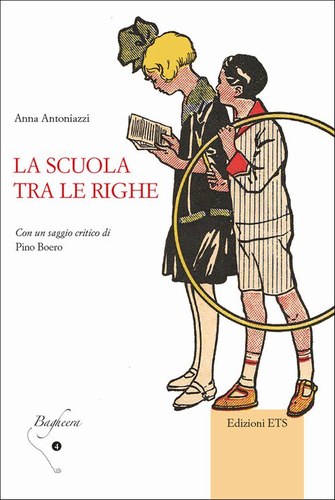
La scuola tra le righe
School between the lines
Author: Anna Antoniazzi
Publication year: 2014
If history is intrinsically linked to every aspect of our lives, tales too – no matter whether they are fantastic or related to directly experienced reality – preserve traces of the past and our deep roots in those who are able and want to identify them. The basic assumption of this volume is, in fact, that the guidelines of political, economic and social changes that involved our Country for the past 150 years can be traced also within the literary production. But not only. Caught through the committed, critical, severe, propagandistic, militant, or ironical and irreverent eye of the author, school appears as a complex organism, alive and vibrant, full of contradictions, ambivalence, sometimes even antinomies. It is indeed inside stories that school reveals its hidden side, turning into an ‘elsewhere’, at times disturbing and obscure, that must be deciphered and interpreted.
Anna Antoniazzi is Associate Professor of Children’s Literature at the Department of Education Studies of the University of Genoa. Scholar of the narrative and imaginative relationship that connects books to other media, Anna Antoniazzi is author of articles in specialized magazines and essays in collective volumes. Among her publications: Labirinti elettronici. Letteratura per l’infanzia e videogame (Milano, 2007); Nella stanza dei bambini. Tra letteratura per l’infanzia e psicoanalisi (with Adalinda Gasparini, Bologna, 2009), Romagna notturna. Fantasmi, spiriti e apparizioni tra fiaba, leggenda e storia (Cesena, 2011) and Contaminazioni. Letteratura per ragazzi e crossmedialità (Milano, 2012). She is author of the video Lo sguardo di Chamsous Sabah. Bambine nell’immaginario (MeLa, 2014).
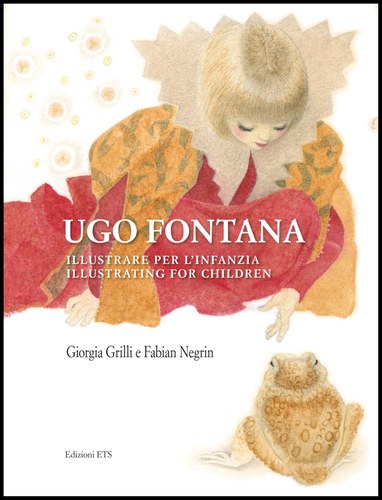
Ugo Fontana
Illustrare per l'infanzia - illustrating for children
Authors: Giorgia Grilli, Fabian Negrin
Translator: Stephanie Johnson
Publication year: 2014
Ugo Fontana (1921-1985) was a Florentine illustrator who dedicated his life’s work to children’s books. From the 1940s until his death, Fontana worked for Italy’s major publishers (Fabbri, Mondadori, Marzocco-Giunti etc.) especially producing large format fairy stories, many for the very popular Fiabe Sonore series that practically no Italian home was without in the 1960s. He also illustrated novels, book covers and learning books like, for example, Grandi Regine (Queens) an overview of women sovereigns from ancient times to the modern day. Here, his vast knowledge of the history of art was harnessed to produce sophisticated compositions and amazing portraits.
Fontana’s focus on childhood and the child’s complex interior world (his children are shown in the full gamut of moods), gave his work an extraordinary sensitivity and quality. His dedication to what he considered the greatest challenge – illustrating for children – led him to illustrate more than 250 books. Returning to examine Fontana’s work in an age where illustration techniques are swifter, more superficial and rarely painstakingly ‘manual’, prompts reflection on the current state of illustrations for children and where they could or should be going. This catalogue in English and Italian includes a wide selection of works by Ugo Fontana, an artist who illustrated the most well-known and successful children’s books of his day, works that now enjoy a cult following and have become prized collector items.
Giorgia Grilli teaches Children’s Literature at the University of Bologna, where she has recently helped found Italy’s first Children’s Literature Research Centre.
She has written many critical essays on children’s literature and, in 2013, for the Fiftieth Anniversary of Bologna Children’s Book Fair, she edited Bologna: Cinquant’anni di libri per ragazzi da tutto il mondo. Bologna: Fifty Years of Books for Children from Around the World (BUP), a double volume in Italian and English containing essays on the recent history of children’s books written by scholars from all over the world.
Fabian Negrin is an author and illustrator of children’s books. Winner of several prestigious international awards, he is a candidate for the Hans Christian Andersen Award and the Astrid Lindgren Memorial Award (considered the ‘Nobel’ prizes of children’s literature).

Lo sguardo della memoria
Rileggendo il Piccolo Principe
The Look of Memory
Rereading The Little Prince
Authors: Aa. Vv.
Editorship: Emy Beseghi, Cosimo Laneve
Publication Year: 2014
Read and loved by children and adults all over the world, The Little Prince continues to be one of the most amazing successes of the publishing history. In the rather mysterious magic of this masterpiece, full of autobiographical echoes and of a secret premonition of the disappearance of its author, readers never cease to find valuable metaphors which reveal, even today, something about us. But who is really The Little Prince, why has he conquered several generations to the point of being translated into more than 200 languages? And who was Saint-Exupéry, the elegant and audacious pilot who disappeared in the Mediterranean like a real fairy tale character? This volume aims at revisiting the most hidden meanings of this timeless classic: with a plurality of critical tools which favour a hermeneutical approach in a pedagogical perspective, Beseghi and Laneve carry out an emotional, particularly timely, complex reinterpretation of the work of Saint-Exupéry, the child-hearted pilot.
Emy Beseghi is Former Full Professor of Children’s Literature at the University of Bologna and Former Scientific Director of the Children’s Literature Research Centre. She is author and editor of several publications, among which Infanzia e racconto. Il libro le figure la voce lo sguardo (2008), La letteratura invisibile. Infanzia e libri per bambini (2012) with Giorgia Grilli.
Cosimo Laneve is Full Professor of Compilers and Interpreters at the Department of Computer Science and Engineering of the University of Bologna. He is author of publications dedicated to the research on teaching and writing, and directs the «Quaderni di didattica della scrittura». Among his latest publications: Manuale di didattica (2011), Senza Parole. Il silenzio pensoso nella scuola (2012) with Chiara Gemma; Raccontare dalla cattedra e dal banco (2013).
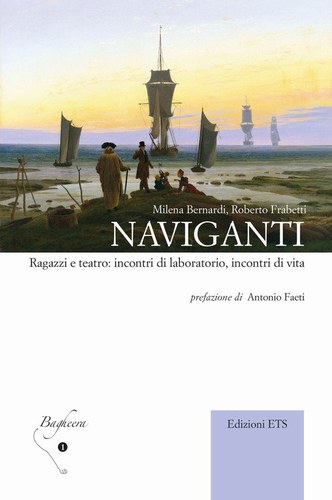
Naviganti
Ragazzi e teatro: incontri di laboratorio, incontri di vita
Sailors
Youngs and theatre: laboratory meetings, life meetings
Authors: Milena Bernardi, Roberto Frabetti
Publication year: 2013
«There are words, in this book, that sound clear and mysterious at the same time: biography, adolescence, outdated, hero, romanticism… It takes courage just to find and pronounce them, these words». These are the opening words of Antonio Faeti’s preface to the volume which includes the account on a long emblematic experience of theatre workshops with very young participants met while they were crossing at the ford of their adolescent years. Protagonists of the theatrical metaphor, girls and boys recognise the existential meaning of their itinerary in the words, inventions, and mythopoiesis that characterises the research. Around that experience move the considerations that go deeper into its meanings, which are more relevant and illuminating than ever if compared to the critical issues that are often highlightened with respect to adolescence in contemporary society. Therefore, it can be seen how metaphorical space allows the generation of conditions of relationship, thought, imagination, initiation and beginning, which open up new horizons of knowledge of oneself, of the other, of the world, in the light of alterity and creative research, no more or not only submitted to the sterile repetition of stereotypies and conventions. The frequent interweaving of literary, poetic, artistic sources offers the possibility to discover unexpected points of view, further visions and itineraries of change, to plan a future filled with meaning. The proposal of “sailors” aims indeed at underlining the cultural and pedagogical need of not wasting the driving force of usually marginal fields in which knowledge, artistic languages, experience and attention to the quality of relationships can be combined accompanying young people towards possible and necessary discoveries of life.
Milena Bernardi is Full Professor of Children’s Literature at the University of Bologna. She published the research monographs Infanzia e fiaba (Bologna, 2005), Infanzia e metafore letterarie (Bologna, 2009) and Il cassetto segreto. Letteratura per l'infanzia e romanzo di formazione (Milano, 2011).
Roberto Frabetti is author, actor, producer and playwrite of La Baracca, the theatre company which administers the Theatre Testoni Ragazzi, a Theatre for Young Audiences. He is author of essays and volumes, among which Il nido e il teatro: adulti e bambini, un rapporto da soggetto a soggetto (Bologna, 2000).
Antonio Faeti, Former Full Professor of Children’s Literature at the University of Bologna, is author of several and important critical essays. Among his most recent publications: La prateria degli asfodeli (Bologna, 2010) and Il libro dei miei fumetti (Milano, 2013).